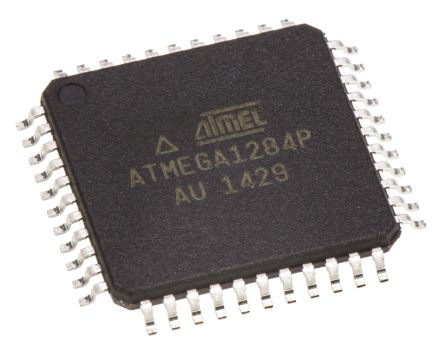ATMEGA1284P-AU
8-bit AVR microcontrollers with 128KB Flash, versatile voltage, 44-pin TQFP
Manufacturer: ['microchip', 'atmel']
series introduction
# ATMEGA1284P - AU Product Series Introduction
## 1. Overview
The ATMEGA1284P - AU is a member of the highly popular AVR® 8 - bit microcontroller family developed by Microchip Technology. This product series is designed to offer a powerful, flexible, and cost - effective solution for a wide range of embedded applications. With its rich set of features and high - performance capabilities, it has become a go - to choice for engineers and hobbyists alike.
## 2. Key Features
### 2.1 Microcontroller Core
- **AVR Architecture**: Based on the advanced AVR RISC (Reduced Instruction Set Computing) architecture, the ATMEGA1284P - AU can execute most instructions in a single clock cycle. This results in a high - throughput performance, allowing it to handle complex tasks efficiently. It has a large number of general - purpose working registers, which further enhances its processing speed and flexibility.
- **Clock Speed**: It can operate at a maximum clock frequency of 20 MHz. This high clock speed enables the microcontroller to perform rapid data processing, making it suitable for applications that require real - time responses, such as motor control and sensor data acquisition.
### 2.2 Memory
- **Flash Memory**: The ATMEGA1284P - AU is equipped with 128 KB of in - system self - programmable Flash memory. This non - volatile memory is used to store the program code. The self - programming feature allows for easy firmware updates, which is crucial for product development and maintenance.
- **SRAM**: It has 16 KB of static random - access memory (SRAM). SRAM provides fast data storage and access, which is essential for storing variables, buffers, and intermediate results during program execution.
- **EEPROM**: There is also 4 KB of electrically erasable programmable read - only memory (EEPROM). EEPROM is used to store non - volatile data that needs to be retained even when the power is turned off, such as calibration data, configuration settings, and user preferences.
### 2.3 Peripherals
#### 2.3.1 I/O Ports
- The microcontroller has 48 general - purpose I/O pins. These pins can be configured as either input or output, allowing for easy interfacing with external devices such as sensors, actuators, displays, and communication modules. The I/O pins can also be used for various functions, including digital input/output, analog input, and external interrupt generation.
#### 2.3.2 Timers/Counters
- It features three 16 - bit timers/counters and one 8 - bit timer/counter. These timers can be used for a variety of applications, such as generating precise time delays, measuring time intervals, and generating pulse - width modulation (PWM) signals. PWM signals are commonly used in motor control, LED dimming, and audio signal generation.
#### 2.3.3 Analog - to - Digital Converter (ADC)
- The ATMEGA1284P - AU has a 10 - bit successive - approximation ADC with up to 16 input channels. This ADC can convert analog signals from sensors (such as temperature sensors, light sensors, and pressure sensors) into digital values with high accuracy. The converted digital data can then be processed by the microcontroller for further analysis and decision - making.
#### 2.3.4 Communication Interfaces
- **SPI (Serial Peripheral Interface)**: The SPI interface allows for high - speed serial communication between the microcontroller and other SPI - compatible devices, such as external memory chips, sensors, and displays. It supports full - duplex communication and can operate at high clock frequencies, enabling fast data transfer.
- **US
Images for reference

44-TQFP

Image Preview

Image Preview